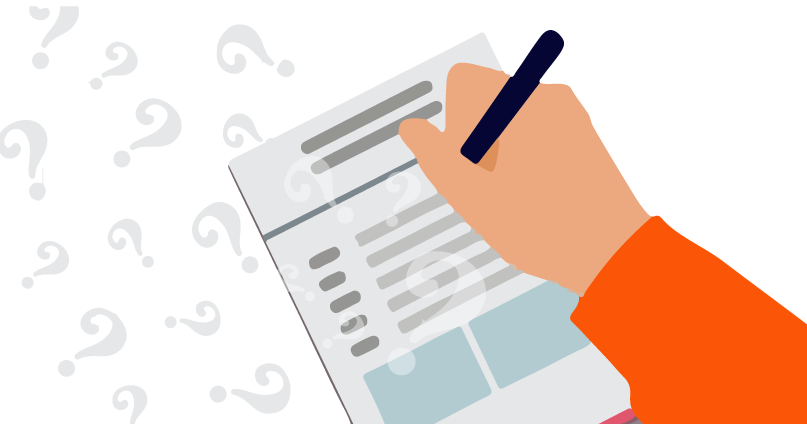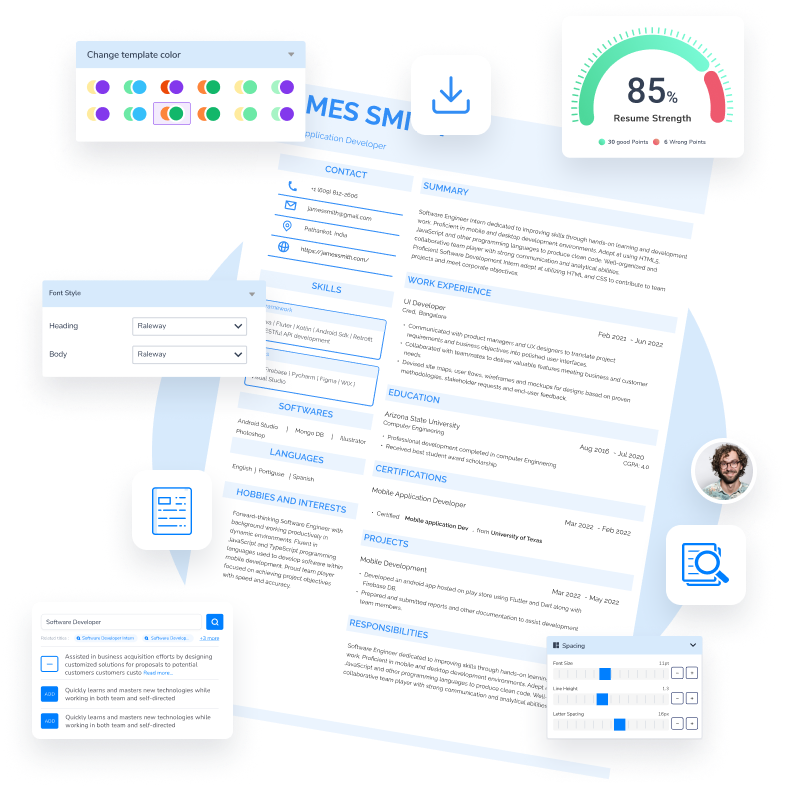How to Write a Cover Letter: A Step by Step Guide
2 minutes read

Cover letters can be a make-or-break part of the job application process. They’re your chance to introduce yourself and explain why you’d be great for the job, and they can help your resume stand out from the crowd.
A well-written cover letter to go with your resume can help you stand out to employers and have a big impact on whether or not a hiring manager calls you in for an interview.
But writing a cover letter doesn’t have to be daunting. It can be an opportunity to show your personality and enthusiasm.
A cover letter is a short note (no more than one page) that you send to a hiring manager or recruiter along with your resume and other materials.
It is an important document that accompanies your resume and provides additional information about your skills and experience.
It is your opportunity to make a good first impression and convince the employer that you are the best candidate for the job.
When writing a cover letter, be sure to focus on the specific qualifications listed in the job posting and highlight how you can contribute to the organization.
When done right, a cover letter lets you talk directly about how your skills and experience fit with the job you're applying for. It also gives you a chance to show the reviewer that you're friendly, creative, and likely to be a good addition to the team.
A well-written cover letter can help you stand out from the competition and increase your chances of getting hired. It is a good opportunity to introduce yourself and explain why you are the best candidate for the job.
A cover letter should be concise, well-written, and error-free.
The cover letter should be tailored to the specific position you are applying for, and it should highlight your skills and experience.
And, if you take the time to personalize it for each job you apply for, it can also demonstrate that you’ve done your research about the company and the position.
The best way to structure cover letter is to start by introducing yourself and explaining why you’re interested in the position.
Writing a compelling cover letter is an important part of your job application. It allows you to introduce yourself, express your interest in the position, and highlight relevant skills and experiences.
Here's a step-by-step guide to help you write an effective cover letter:
Header
- Include your contact information at the top of the cover letter, including your full name, phone number, email address, and the date.
Salutation
- Address the hiring manager or recipient by name, if possible. If you're unsure of the recipient's name, use a general salutation such as "Dear Hiring Manager" or "Dear [Company Name] Team."
Opening paragraph
- Start with a strong opening sentence that grabs the reader's attention.
- State the position you're applying for and mention how you learned about the job opportunity (e.g., job posting, referral).
- Express your enthusiasm for the role and briefly explain why you are interested in working for the company.
Body paragraphs
- In the following paragraphs, highlight your most relevant skills, experiences, and achievements that make you a strong candidate.
- Provide specific examples and quantify your accomplishments whenever possible.
- Align your qualifications with the job requirements and demonstrate how you can contribute to the company's goals.
- Use keywords from the job description to show that you have a good understanding of the role.
Showcase your research
- Demonstrate your knowledge about the company by mentioning specific projects, initiatives, or values that align with your interests and skills.
- Explain why you believe you would be a good fit for the company culture and how your contributions can make a positive impact.
Closing paragraph
- Summarize your key qualifications and express your interest in further discussing the opportunity.
- Indicate your availability for an interview and provide your preferred contact method.
- Thank the reader for considering your application and express your eagerness to contribute to the company.
Closing and signature
- End the cover letter with a professional closing, such as "Sincerely" or "Best regards."
- Leave space for your typed name, followed by your signature if you're submitting a physical copy.
Proofread and edit
- Review your cover letter for any grammatical or spelling errors.
- Ensure a consistent writing style and tone throughout.
- Read it aloud or have someone else review it to catch any mistakes or awkward phrasing.
Format and length
- Keep your cover letter concise and focused, typically not exceeding one page.
- Use a professional font (e.g., Arial, Calibri) and maintain a clean, organized format.
- Align your text to the left and use standard margins.
Save and submit
- Save your cover letter as a PDF or Word document with a clear and professional file name.
- Follow the employer's instructions for submitting your application, whether it's through email, an online form, or a job portal.
Remember, your cover letter should complement your resume and provide additional context and information about your qualifications.
Tailor each cover letter to the specific job you're applying for, and showcase your enthusiasm and genuine interest in the company. Good luck with your application!
Finally, explain how you can contribute to the company and what you hope to gain from the experience.
The way you start your cover letter sets the tone for the whole thing. So, you want it to be memorable, friendly, easy to talk about, and very related to the job you want.
Don't start with your name because the hiring manager can already see it. But it's important to mention the job you're applying for.
The hiring manager may be looking at applications for half a dozen different jobs at once. You could say something simple like, "I'm excited to apply for [job] with [Company]."
But you might want to introduce yourself with a snappy first paragraph that shows how excited you are about the company you're applying to, how much you love what you do, or how successful you've been in the past.
This is a great place to explain "why" you want to apply. Make it clear why you want to work for this company and in this job. Have you been using their products for a long time?
Do you know how to solve a problem like the one they're working on? Do you like how they talk about their brand or how they make products?
For example, let's say you're applying for a marketing job at a company known for its delicious pies and baked goods.
You could say in your opening that you love pie so much that when you were in the fourth grade, you won the blue ribbon at the National Cherry Festival pie-eating contest.
One common mistake in a cover letter is to talk only about how great the job would be for you. The truth is that hiring managers already know that. What they really want to know is what you can bring to the job and company.
So, once you know what the opening is, you should pull out a few key ideas that will be the backbone of your cover letter.
They should show that you know what the organisation wants and explain how your experience fits with the job. Look for clues in the job description.
What problems does the company want to fix by hiring this person? Which skills or experiences are high up or mentioned more than once? Most likely, these will be the most important requirements.
Choose the three to five most important traits that you think best describe you. For example, you might be looking for a job as a client manager and come across a posting that interests you. You could find these things that fit you well:
Several times in the job description, meeting and beating quotas is mentioned.
The company solves problems by getting people from different departments to work together.
The sales department needs someone who can learn quickly so that the account executive can learn about leads quickly and make pitches that fit their needs.
You should put your basic information at the top of your cover letter. If you want, you can even use the same heading from your resume.
If the job posting says to send your cover letter in the body of an email, you can put your contact information at the end, after your name. You don't need to include your email address here since they already have it.
Use Hyresnap Resume Tool to make your perfect job-winning resume now!

Try Now for Free!




